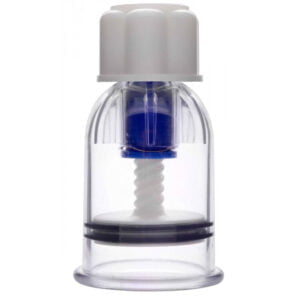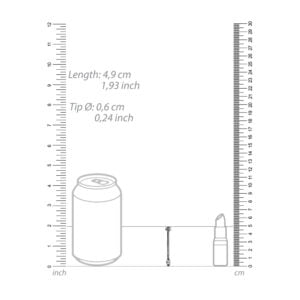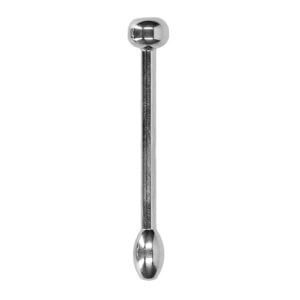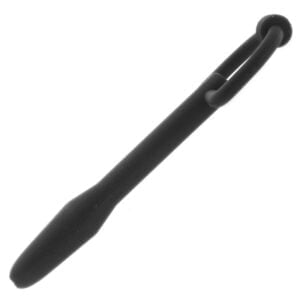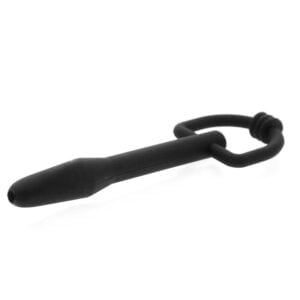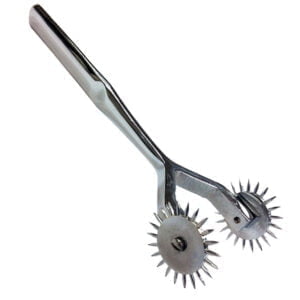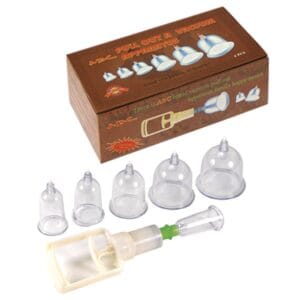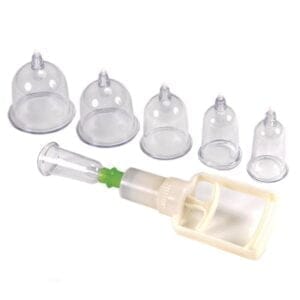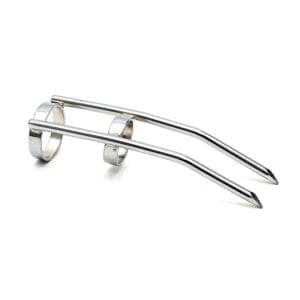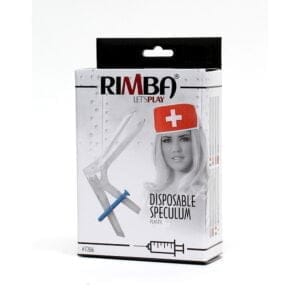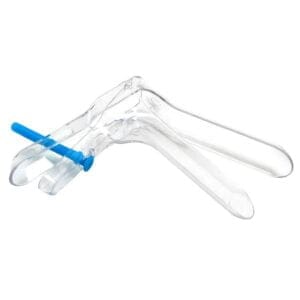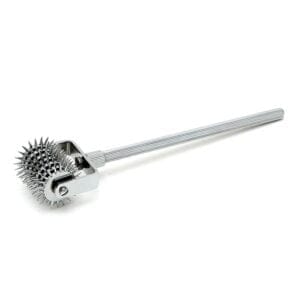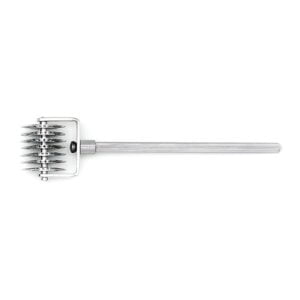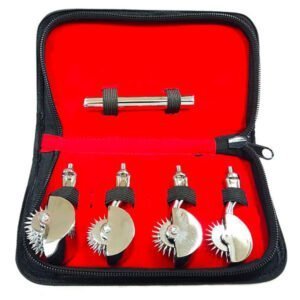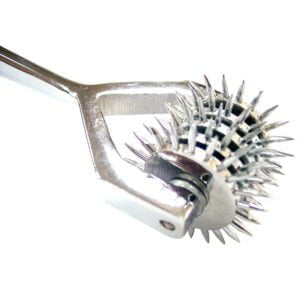Explore
Menu
Wishlist
0
Sign in
Login
Register
0
£ 0.00
0
Shopping cart (0)
Subtotal: £ 0.00
Spend £ 149.00 to get free shipping!
Congratulations! You've got free shipping.
FREE worldwide shipping on orders £149+
FREE UK shipping on orders £49+ and FREE worldwide shipping on orders £149+
Go Shopping
FREE UK shipping on orders £49+ and FREE worldwide shipping on orders £149+
Go Shopping
Metal Catnail
SKU: R7275 £ 21.99Select options This product has multiple variants. The options may be chosen on the product pageMedical play often involves the use of specialised equipment and role-play scenarios that mimic a clinical setting. This can range from playing doctor and patient to more advanced scenes that utilise tools like adjustable hospital beds and E-stim devices. When done correctly, such items can heighten the senses and create an electrifying experience that remains both safe and enjoyable.Incorporating medical instruments into our BDSM play not only enhances the physical aspect of the experience but also taps into psychological elements. Platforms like BLISSQUE provide a variety of medical-grade tools designed for such adventures. This allows us to safely explore fantasies that are deeply rooted in vulnerability and control, making the experience more immersive and thrilling.
Historical Context of Medical Instruments in BDSM
In the realm of BDSM, medical instruments have played a pivotal role, blending genuine medical tools with elements of fantasy. This history is rich with transitions from common medical practices to distinct rituals in BDSM settings.Evolution of Medical Play
Medical play has roots deeply embedded in the history of medical advancements. Early adopters of BDSM found allure in the precision and authority medical instruments carried. During the 20th century, as BDSM practices became more visible, medical play emerged prominently. Tools such as stethoscopes, syringes, and speculums were repurposed for sensory exploration. They introduced a unique dynamic of trust and vulnerability in roleplay scenarios, where individuals could explore themes of power and control within a structured environment. These elements were transformed into instruments of exploration and pleasure. Today, many of these practices are embraced by enthusiasts seeking a blend of realism and fantasy.Influence on Modern Fetishists
Modern fetishists draw significant influence from the history of medical play. The appeal lies in the structured environment and the clinical precision these instruments provide. This fascination is not just about the tools but also the scenarios they facilitate. Many prefer the psychological aspect, where medical settings evoke feelings of authority and care. The integration of realistic medical scenarios into fetish practices has led to a thriving subculture. This blend of medical authenticity and fetishistic creativity inspires many to merge professional equipment with personal fantasies. The ongoing evolution continues to captivate, combining the old with new interpretations, keeping the connection between medical history and fetish alive and engaging.Types of Medical Instruments Used in BDSM
In the realm of BDSM, medical instruments serve a unique role. These tools help create scenarios that mimic medical environments, enhancing the experience of roleplay and sensory exploration. Our focus areas include examination tools, restraint devices, and sensory instruments.Examination Tools
Examination tools are essential in medical play. Stethoscopes, tongue depressors, and reflex hammers are commonly used. These tools create an authentic experience, allowing us to step into a clinical setting.Stethoscopes enable one to listen to a partner's heartbeat or breathing. Tongue depressors can simulate check-ups, adding to the realism. Reflex hammers bring an element of surprise, as they can be used to test reactions. Each tool enhances the medical roleplay and roleplaying atmosphere, which is both exciting and controlled.Restraint Devices
Restraint devices are classic elements in medical-themed BDSM scenes. Surgical tables, straps, and cuffs can be used to emulate medical restraint, offering both safety and intensity for everyone involved.Surgical tables provide a sturdy base, allowing for various positioning. Straps ensure secure restraint without causing harm. Cuffs, typically padded for comfort, add to the sense of genuine medical constraint. These devices enable a power dynamic often sought in BDSM, adding structure and boundaries that are key to consensual play.Sensory Instruments
Sensory instruments heighten experiences within the medical play by stimulating different sensations. One example is the Wartenberg pinwheel, which is designed to roll over the skin, offering sensations ranging from tickling to sharp tingles. You can find pinwheels with different designs, like the Kink by Doc Johnson Three Wheel Metal Wartenberg Pinwheel, providing varied experiences.Electrostimulation devices are another kind of sensory instrument. They introduce controlled electrical currents to excite nerve endings. These tools can range in intensity, allowing us to explore different thresholds of sensation. Sensory instruments like these add depth and variability to any medical play scenario.Safety and Hygiene Practices
Maintaining high standards of safety and hygiene is crucial in medical play. We focus on sterilisation techniques and risk management to ensure a safe experience. Proper practices prevent infections and manage risks, keeping everyone involved protected.Sterilisation Techniques
When engaging in medical play, always use sterilised equipment to minimise the risk of infection. Tools should be made of easily sterilised materials, such as stainless steel or medical-grade silicone. We can use methods like autoclaving, which uses high-pressure steam, or chemical sterilisation with solutions like isopropyl alcohol.Using single-use disposable tools is a safe choice, as it eliminates the risk of transmitting bacteria or viruses. After sterilising reusable equipment, store it in a clean, sealed container to maintain its sterility before use. To avoid allergic reactions, both participants need to communicate openly about any allergies to cleaning products.Risk Awareness and Management
Medical play involves inherent risks, so understanding and managing them is essential. We should establish clear boundaries and communicate thoroughly to ensure everyone's limits and comfort levels are respected. It's important to have a first-aid kit nearby and know basic first aid in case of an emergency.Safe words or signals allow participants to communicate easily, ensuring that play can be stopped immediately if necessary. We must also regularly inspect equipment for signs of wear or damage that could compromise safety. Participants should engage in continuous learning about the activities and equipment involved to keep up with best practices, further reducing risks.Ethical Considerations and Aftercare
When engaging in BDSM practices, it is vital to prioritise ethical considerations and proper aftercare. This includes ensuring clear consent and ongoing communication, as well as addressing emotional and physical needs once activities have concluded.Consent and Negotiation
Consent and negotiation are the cornerstones of ethical BDSM practices. Before any play begins, all parties must have a thorough discussion to set boundaries and understand each other's limits. We should use safe words, which act as an agreed-upon signal during activities to indicate when someone wants to slow down or stop altogether. It is important that participants feel comfortable and empowered to voice their needs at any time.Communication should be ongoing, and consent should be revisited as necessary to ensure everyone remains in agreement. Especially in scenarios involving medical play or specific fetishes, we must address and clarify all risks involved. By actively engaging in this process, we help prevent misunderstandings and ensure a safe, consensual environment for all.Emotional and Physical Aftercare
Aftercare is a crucial component following BDSM scenes, as it helps participants transition from the intense dynamics of the session back to everyday life. Emotional support may involve conversation, cuddling, or simple reassurance. We recognise that emotional vulnerability often follows these encounters, making it essential to attend to the emotional well-being of all parties involved.Physical aftercare addresses any bodily needs, such as tending to bruises, scratches, or potential injuries. Applying antiseptic ointments or using ice packs can aid in the healing process, especially after intense physical activities. We encourage checking in with each other to ensure everyone feels comfortable and reassured, fostering a sense of safety and care within the practice.Frequently Asked Questions
In exploring medical instruments within BDSM, we address specialised usage, safety, and hygiene. We'll discuss the materials used and ensure proper sterilisation practices. Understanding risks and responsible learning is crucial for safe play.What is the purpose of specialised medical instruments in a BDSM context?
Specialised medical instruments enhance roleplay and power dynamics and mimic real medical settings, adding authenticity to scenes. Instruments like needles or examination tables allow participants to explore medical-themed kinks safely and consensually.How does one ensure the safe and hygienic use of medical devices during BDSM play?
Safety begins with proper knowledge and consent. It's vital to clean and sterilise tools before and after use. Wearing gloves and using disposable equipment when possible reduces the risk of infection, ensuring hygiene is maintained throughout the scene.What are the guidelines for the proper sterilisation of BDSM medical tools?
Sterilising BDSM medical tools involves using medical-grade disinfectants or autoclaves. Boiling water can be effective for non-metal items. To maintain tool integrity and user safety, it's essential to follow manufacturer instructions and never mix sterilisation agents.Which materials are commonly used to manufacture BDSM-appropriate medical instruments?
Common materials include stainless steel and medical-grade silicone, known for their durability and ease of sterilisation. These materials are hypoallergenic, making them a safe choice for most users. The design and material ensure reliability in BDSM scenarios.What are the potential risks associated with using medical instruments in BDSM scenarios?
Potential risks include infection, injury, or allergic reactions. Misuse of instruments can also result in unintended harm. Clear communication and consent are necessary to navigate these risks safely, and it is crucial to be educated on proper use.How can one acquire knowledge about medical play to incorporate medical instruments in BDSM responsibly?
Learning can be achieved through reputable workshops, reading materials from trusted sources, or consulting with experienced practitioners. Websites like The Narratologist provide insightful information, enhancing our understanding of safe practices in medical play.Delivery Policy
At the moment we deliver only to a few countries. Click on the icon above or check our FAQ section.
24/7 Support Center
You can contact our support team by sending us an email or by making a telephone call!
Categories
- Show All Categories
- Bondage (556)
- Condom (48)
- Hen And Stag Nights (11)
- Novelty (54)
- Sex Games (36)
- Sex Lubricant Product (180)
- Sex Toys (1968)
- Sexy Lingerie (516)
- Sweet Treats (6)
- Bondage (556)
- Bondage Hoods (15)
- Bondage Kits (13)
- Chastity Cage (33)
- Cock Bondage (22)
- Cock Ring Bondage (32)
- Collar (42)
- Face Masks (42)
- Fetish (16)
- Gag (47)
- Handcuffs (31)
- Large Accessories (5)
- Medical Instruments (36)
- Nipple Clamp Bondage (47)
- Paddle (23)
- PVC Bed Sheets (7)
- Restraint (99)
- Whip (46)
Price Range
Brands
- Clean Stream (1)
- Doc Johnson (1)
- Master Series (6)
- Rimba (5)
- Rouge Garments (13)
- Shots Toys (9)
- Taboom (1)
Materials
- Leather (1)
- Metal (7)
- Plastic (6)
- Silicone (3)
- Skin Safe Rubber (1)
- Stainess Steel (17)
Size
- 2 Inches (3)
- 2.4 Inches (1)
- 3 Inches (1)
- 3.25 Inches (1)
- 4 Inches (1)
- 4.25 Inches (1)
- 4.5 Inches (1)
- 5 Inches (1)
- 6 Inches (3)
- 6.25 Inches (1)
- 6.5 Inches (1)
- 6.75 Inches (1)
- 7 Inches (1)
- 9.5 Inches (2)
- See Description (1)


